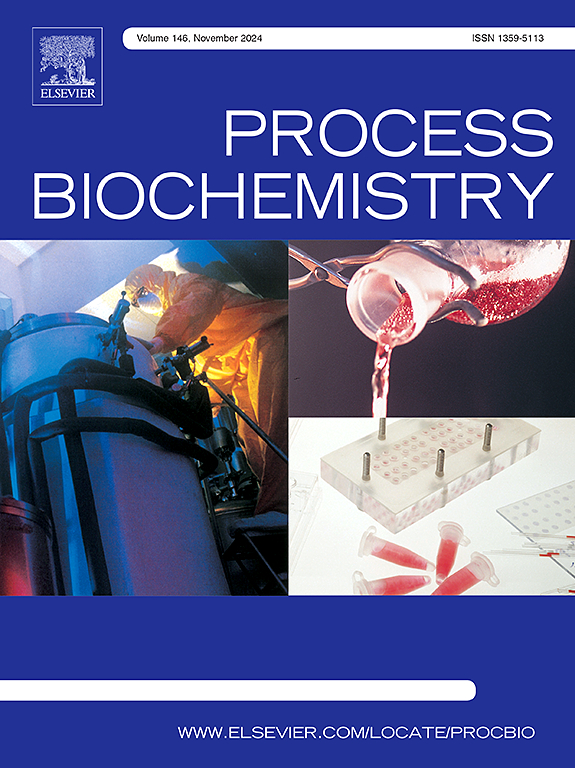Autocatalytic hydrothermal pretreatment for cassava bagasse depolymerization
IF 3.7
3区 生物学
Q2 BIOCHEMISTRY & MOLECULAR BIOLOGY
引用次数: 0
Abstract
This study evaluated pretreatment methods for cassava bagasse (CB) degradation before biodigestion: I) using cassava processing wastewater (CW) and water, and II) using the liquid hydrolysate from the first step as a catalytic agent. Mixtures of CB (6–134 g), CW (190–318 g), and water (76–204 g), were tested to optimize CB depolymerization, measured by yield (%) and increase (g.L−1) in reducing sugars (RS). In the first pretreatment (I) the conventional hydrothermal pretreatment (HTP) was performed, the optimal solid-liquid ratio was 0.21 (m/m), using 70 g of CB, 211.34 g of CW, and 118.67 g of water at 120ºC for 75 minutes. This resulted in a 41.32 ± 1.31 % of RS yield and an increase of 0.64 ± 0.02 g.L−1 RS. In the second pretreatment (II), the optimal ratio from the first step was applied, achieving a higher yield of 73.30 % RS, an increase of 1.22 g.L−1 RS. Neither furfural nor 5-hydroxymethylfurfural (5-HMF) were detected in the liquid hydrolysates. The study demonstrates that autocatalytic hydrothermal pretreatment (AHP) is an efficient strategy to depolymerize CB, enhancing its digestibility and RS availability. Moreover, incorporating CW into the hydrolysis process contributes to waste valorization, promoting environmentally sustainable practices in the cassava industry.
求助全文
约1分钟内获得全文
求助全文
来源期刊

Process Biochemistry
生物-工程:化工
CiteScore
8.30
自引率
4.50%
发文量
374
审稿时长
53 days
期刊介绍:
Process Biochemistry is an application-orientated research journal devoted to reporting advances with originality and novelty, in the science and technology of the processes involving bioactive molecules and living organisms. These processes concern the production of useful metabolites or materials, or the removal of toxic compounds using tools and methods of current biology and engineering. Its main areas of interest include novel bioprocesses and enabling technologies (such as nanobiotechnology, tissue engineering, directed evolution, metabolic engineering, systems biology, and synthetic biology) applicable in food (nutraceutical), healthcare (medical, pharmaceutical, cosmetic), energy (biofuels), environmental, and biorefinery industries and their underlying biological and engineering principles.
 求助内容:
求助内容: 应助结果提醒方式:
应助结果提醒方式:


